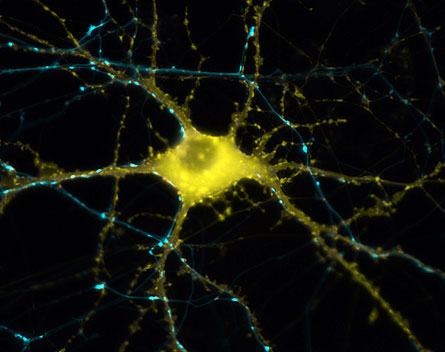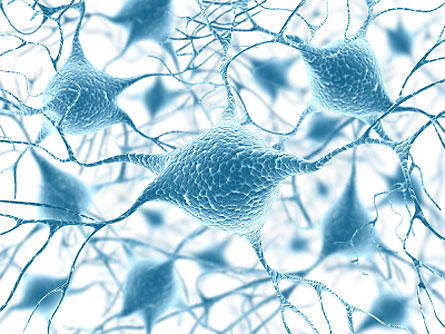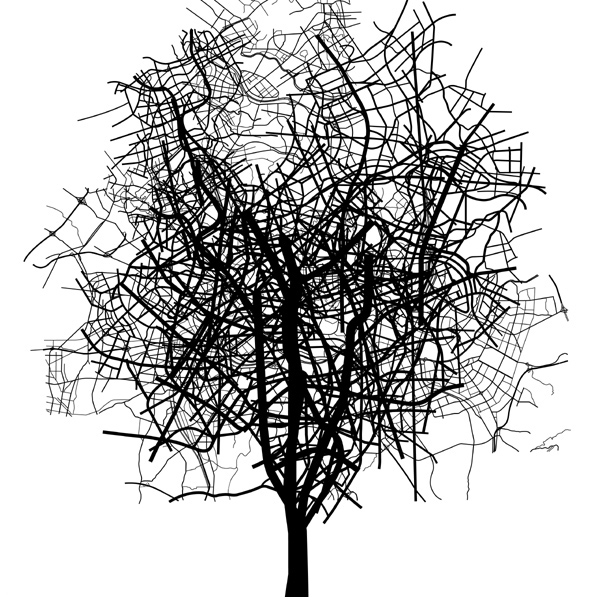
In
Limited Fork Theory, the moments are always ready.
The moment of enactment, of idea taking shape, not out of nothing, but out of some energy and substance available to become the electrical and chemical activity of thought. Both the mechanisms and what powers the mechanisms of thought are available. A moment is ready to become tethered to an idea, to become part of the birth stamp of idea. A peculiar —and I think,
marvelous— enlargement

—time need not be physically stressed to accommodate moments in which idea is born. Time is apparently flexible. A moment opens, not necessarily as a slit, but in all directions and on all scales necessary for what will occupy the opening (which could also take the form of a swelling or bubble or other distortion without causing time to stop functioning). Occurrence may be experienced sequentially, but the line of sequence may take on any shape, may twist, curl, spiral, loop, fold, coil, and so forth, or may be, on some scale[s] of encounter, apparently straight. So the idea system may change shape, may be configured and reconfigured and still be supported by the time and space that host it, the
configurable time and the
configurable space that host it. The idea system's movement and growth are unrestricted within what is possible for movement and growth of idea systems.
(image of neuron response to an electrical signal from Contemplating Thought by Susan Gaidos at Science News for Kids)
Brain need not be physically stressed in order to accommodate idea systems and their possible associated infinities. But there is expansion occurring. An emerging idea system contributes to there being more in the mind than before the emergence. The idea system itself may grow, may lead to subsystems capable of as much or even more growth than any of its source systems. And there is room for the expansion, always room for expansion. I have not had to evict an idea system in order to make room for another. When inactive, it is as if the idea system is compressed for better storage, but when necessary, it may unfold, and have space for that unfolding, the size of my head apparently constant. The hat I wore before an idea system emerges sill fits after emergence.

In the mind there are many universes. Compressed universes. And both electrical and chemical keys and locks to these kingdoms.
(image of linked neurons from Contemplating Thought by Susan Gaidos at Science News for Kids)
The time and space in which thought occurs is available —the idea system will fit into the existing brain, the forms of enlargement and expansion the idea system require apparently not enlarging the brain's physical dimensions, at least not in an easily measurable way. There are bursts of electrical and chemical activity when idea systems are born—sometimes twin idea systems, triplets, or more. Explosions perhaps similar to fireworks: flowering idea systems. Luminous flowerings. Lightning, of course, as idea trails. I would love for my hair to respond to these flowerings, a glow traveling from the roots to the ends of the hair, maybe even splitting those ends more. I would like this at least once. I am thinking of this light, and it is a radiant happening in my mind. And in the mind of a mermaid I imagine thinking while submerged in water, her glowing hair like other glowing tentacles in the ocean. She comes out of the sea as if her head's on fire, strands of hair like streaks of sunset, intensified by dust and debris light filters.
Maybe I'm too easily impressed, wowed too much by existence itself
—the existence of anything— but I'm taken with the wow of how there's room for an idea when the idea emerges. No pinch or squeeze in my experience. Within what exists, an access point appears to, for instance, a tube-like structure where a universe may grow, attached to a facet of a universe that itself may be attached to a facet of yet another universe or system of existence with complex geometry.
Space and time are able to accommodate the idea system, no matter how elaborate the growth of the world of that thought system. A new reality may emerge without displacing realities already active; in fact, the thinker may easily navigate to other idea system realities. The electrical and chemical streams will flow
(unless damaged —in some cases, perhaps damaged on some scale in some location by aspects of the flow of the erupting idea system). Forms of displacement (including forms of distortion) can and do occur, but are not necessary, may not the norm; in most cases, a new reality of thought emerges in the brain without apparently altering space and time although space and time were full before the arrival of the idea system that prior to arrival apparently had no existence.

The moments are available, moment systems: moment and the tethered context of moment, the where of when, the when of where, for instance. The moment system comes in stereo, is quadrophonic, has dimensions of being, complex geometry. The possibilities of moments are arranged in all possible arrangements, fulfillment occurring when a path is selected, followed. A ideas emerges in a moment and fixes that moment to its emergence, produces a general definition further defined by subsequent choices and behavior along the path of emergence. Now are choices limited to the shaped infinities available within the context of the fixed moment, each decision reconfiguring the available possibilities within limited infinities. So there is a sequence of decision or a line of decision. A line of what happens in the idea system. The line is made of sequential components, but the shape of the line may be any possible shape. May be a spiral or curl, a loop, a zigzag, or may be straight, etc., may be of mixed form, may change direction yet still be expressible as sequence: this happened, then this happened, as the happenings form patterns and shapes of diverse and complex geometries.
(tree mapping of streets of Seoul from Lee jang sub's ComplexCity Project)
Every possible configuration of moment is waiting to become event, etched into a memory of happening, even what may be imagined, what happens in imagination, and what decision excludes. Possible substance is not the same as fulfilled (
it has happened) substance. Available for fulfillment vs fulfilled. The where of availability lacks the physicality that defines the where of our existence; accessing the where of availability produces fulfillment, but an act of fulfillment indicates that what was necessary for fulfillment could be accessed.
The moments that are available as if in queues configured in every way that queues may be configured. So some queues bend somewhere in their queue state. Some rotate somewhere in the queue state. Some twist. Some decay. Some spring. Some (parts of) queues are concealed in (parts of) queues). Some queues are reflections, shadows, eclipse systems. Some queues commit to digesting. Some are uncommitted for now. Some are gaseous. Noisy. Some are apparently silent because their vibrations are not measured in an audible range, but the trembling is nevertheless symphonic sometimes. This is all at once. Every possibility exists. Can be mined. Plucked. And so forth. And maybe there is someone to select every possibility. Maybe there is no waste of possibility. Maybe, for this would have to be one of the possibilities, there is a version of me who still sees clearly out of the left eye.
It is as if one moment system contains all possibility, is all possibility, is contained by all possibility until defined by specifics of happening.
The moments are ready to be enacted, to become path, to become a queue of limiting factors as the moment trail unfolds.
Infinities within the limiting factor of enactment are always available.
Each selection shapes the remaining infinities, each smaller, but no less infinite.



 —time need not be physically stressed to accommodate moments in which idea is born. Time is apparently flexible. A moment opens, not necessarily as a slit, but in all directions and on all scales necessary for what will occupy the opening (which could also take the form of a swelling or bubble or other distortion without causing time to stop functioning). Occurrence may be experienced sequentially, but the line of sequence may take on any shape, may twist, curl, spiral, loop, fold, coil, and so forth, or may be, on some scale[s] of encounter, apparently straight. So the idea system may change shape, may be configured and reconfigured and still be supported by the time and space that host it, the configurable time and the configurable space that host it. The idea system's movement and growth are unrestricted within what is possible for movement and growth of idea systems. (image of neuron response to an electrical signal from Contemplating Thought by Susan Gaidos at
—time need not be physically stressed to accommodate moments in which idea is born. Time is apparently flexible. A moment opens, not necessarily as a slit, but in all directions and on all scales necessary for what will occupy the opening (which could also take the form of a swelling or bubble or other distortion without causing time to stop functioning). Occurrence may be experienced sequentially, but the line of sequence may take on any shape, may twist, curl, spiral, loop, fold, coil, and so forth, or may be, on some scale[s] of encounter, apparently straight. So the idea system may change shape, may be configured and reconfigured and still be supported by the time and space that host it, the configurable time and the configurable space that host it. The idea system's movement and growth are unrestricted within what is possible for movement and growth of idea systems. (image of neuron response to an electrical signal from Contemplating Thought by Susan Gaidos at  In the mind there are many universes. Compressed universes. And both electrical and chemical keys and locks to these kingdoms.
In the mind there are many universes. Compressed universes. And both electrical and chemical keys and locks to these kingdoms.  The moments are available, moment systems: moment and the tethered context of moment, the where of when, the when of where, for instance. The moment system comes in stereo, is quadrophonic, has dimensions of being, complex geometry. The possibilities of moments are arranged in all possible arrangements, fulfillment occurring when a path is selected, followed. A ideas emerges in a moment and fixes that moment to its emergence, produces a general definition further defined by subsequent choices and behavior along the path of emergence. Now are choices limited to the shaped infinities available within the context of the fixed moment, each decision reconfiguring the available possibilities within limited infinities. So there is a sequence of decision or a line of decision. A line of what happens in the idea system. The line is made of sequential components, but the shape of the line may be any possible shape. May be a spiral or curl, a loop, a zigzag, or may be straight, etc., may be of mixed form, may change direction yet still be expressible as sequence: this happened, then this happened, as the happenings form patterns and shapes of diverse and complex geometries.
The moments are available, moment systems: moment and the tethered context of moment, the where of when, the when of where, for instance. The moment system comes in stereo, is quadrophonic, has dimensions of being, complex geometry. The possibilities of moments are arranged in all possible arrangements, fulfillment occurring when a path is selected, followed. A ideas emerges in a moment and fixes that moment to its emergence, produces a general definition further defined by subsequent choices and behavior along the path of emergence. Now are choices limited to the shaped infinities available within the context of the fixed moment, each decision reconfiguring the available possibilities within limited infinities. So there is a sequence of decision or a line of decision. A line of what happens in the idea system. The line is made of sequential components, but the shape of the line may be any possible shape. May be a spiral or curl, a loop, a zigzag, or may be straight, etc., may be of mixed form, may change direction yet still be expressible as sequence: this happened, then this happened, as the happenings form patterns and shapes of diverse and complex geometries.